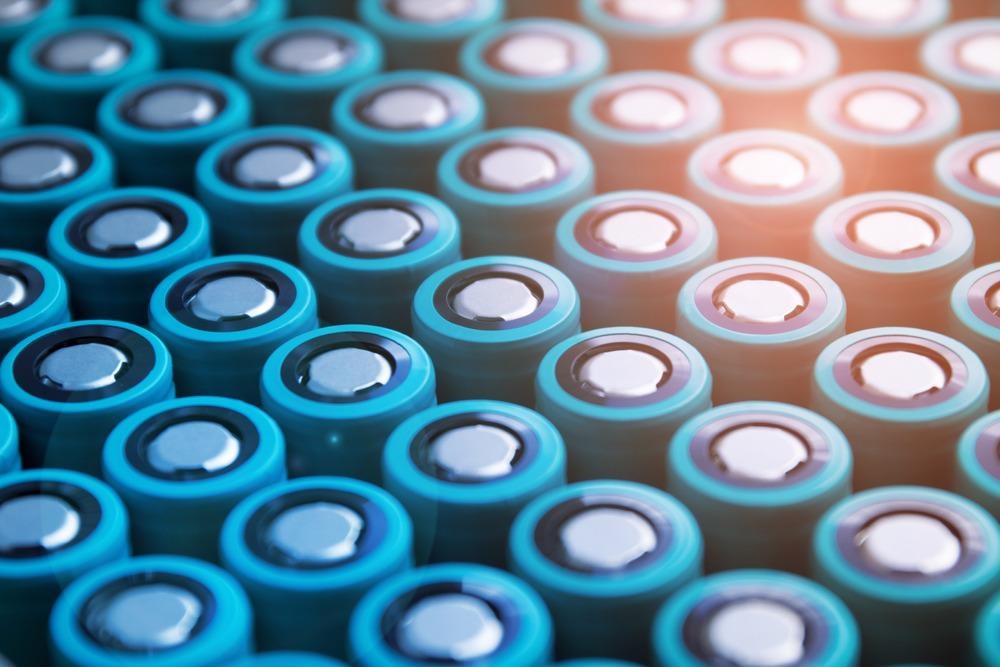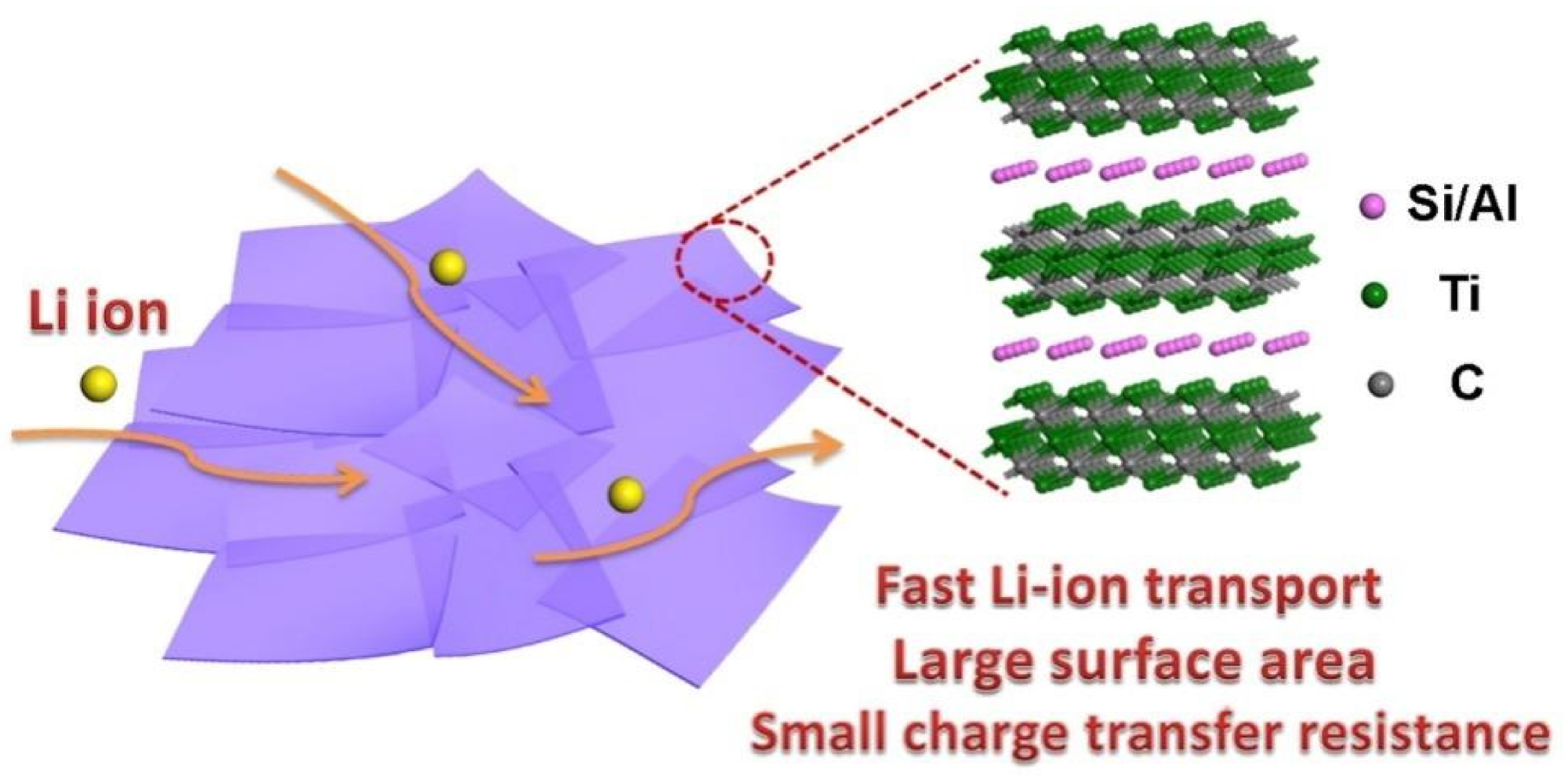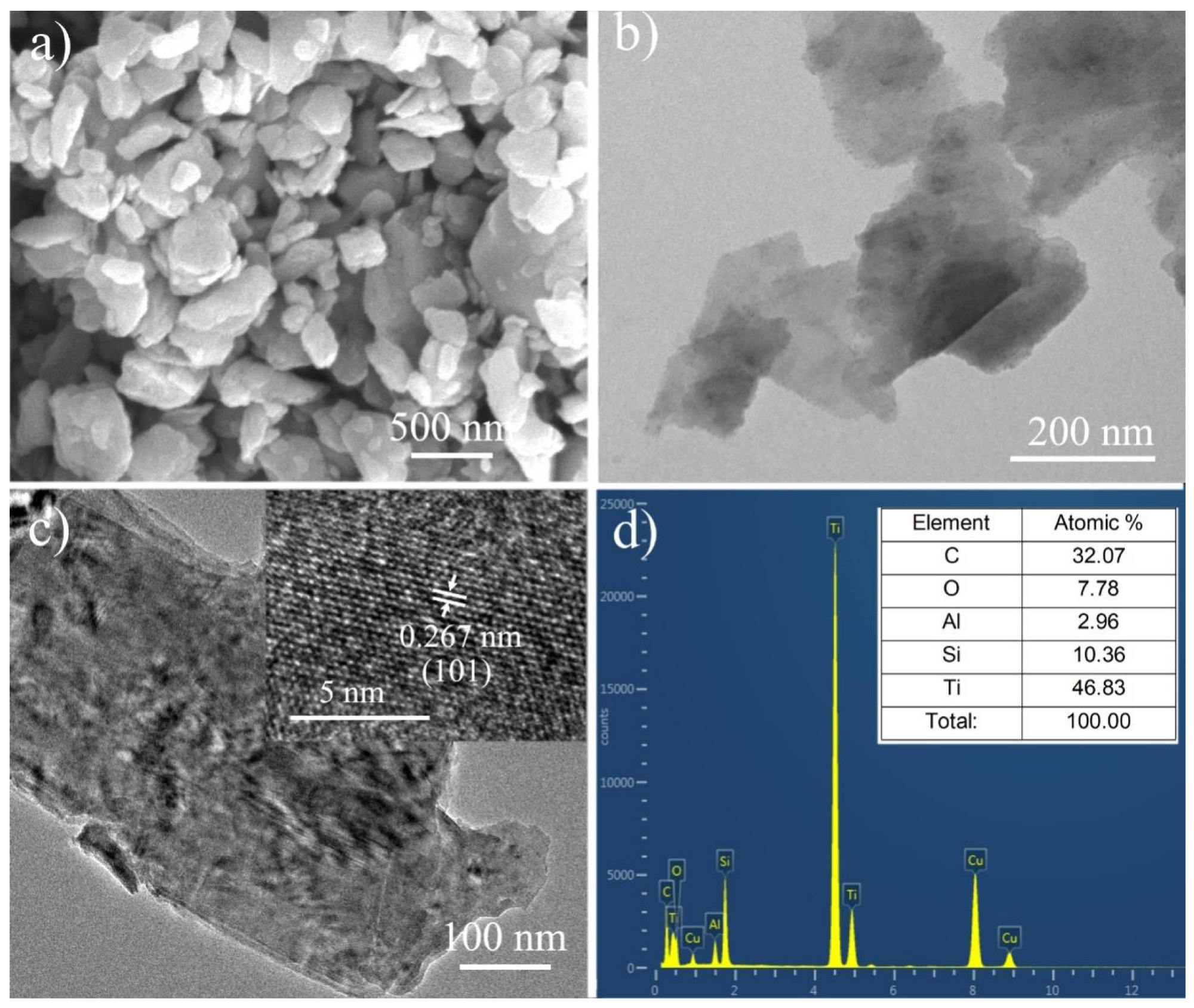A team of researchers has successfully developed 2D nanosheets using novel MAX phase materials (TSAC) with promising electrochemical properties for lithium-ion fuel cells, according to a recent study published in the journal Nanomaterials.

Study: Ti3Si0.75Al0.25C2 Nanosheets as Promising Anode Material for Li-Ion Batteries. Image Credit: P5h/Shutterstock.com
In comparison to their bulk counterparts, the highly porous 2D TSAC nanosheets exhibit improved lithium-ion absorption capacity, good cycling reliability, and remarkable rate efficiency.
What are MAX Phase Materials?
MAX phase materials are stacked carbides with the structural formula Mn+1AXn, where n is a positive integer between 1 and 4, M is a transition metal, A is an A-group material, and X is carbon. These compounds have garnered considerable interest in recent years owing to their unique blend of metallic and ceramic characteristics.
The MAX phases exhibit great corrosion protection, heat transfer properties, rust resistance, outstanding electrical conductance, good hardness, high Young's modulus, and remarkable mechanical properties because of their intrinsic heterostructure with sequentially organized MX and A layers.
Due to their fibrous structure and good conduction, MAX phases have a lot of promise for lithium-ion retention in lithium-ion batteries (LIBs) or fuel cells. However, MAX phases' estimated capacities are poor, especially in the first few charge-discharge phases, limiting their real-world applications in LIBs. Therefore, increasing the lithium-ion absorption characteristic of MAX phase materials is very critical.

Schematic illustration of the advantages by using TSAC nanosheets-based electrode for Li-ion battery. © Xu, J. et al. (2021).
Traditional MAX Phase Nanosheets: Properties and Limitations
It has been observed during the past decade that nanomaterials, especially ultrathin 2D nanosheets, exhibit superior characteristics to their bulk counterparts. For example, the reversible potential of free-standing graphene sheets (GNS) was determined to be 540 mAhg-1 and that of N-GNS to be 684 mAh g-1, both of which are more than graphite's estimated reversible potential. This is advantageous for several energy storage applications, including lithium-ion batteries.
However, unlike the synthetic graphene alternative (IGA), the MAX components feature fairly strong linkages between the MX and A layers, making it hard to disintegrate the bulk MAX compounds into ultrathin nanosheets using a simple sonic abrasion procedure. The majority of Ti3SiC2 and Ti2SC particles are split into tiny species rather than disintegrating into thin 2D nanosheets.

(a) XRD pattern and (b) SEM micrograph of the product synthesized by SHS. © Xu, J. et al. (2021).
Synthesis of Novel TSAC Nanosheets for Lithium-ion Batteries
In this work, the researchers created extremely thin TSAC (Ti3Si0.75Al0.25C2) nanosheets with a size of about 4 nm. Because of the minimal thickness of TSAC nanosheets, lithium ions can readily agglomerate into the TSAC nanosheet strands, making them attractive contenders for use as electrodes in rechargeable batteries. Furthermore, since the A-group layer improves the material's metallurgical characteristics, the conductance of the MAX phase is rather high, resulting in a considerable increase in the electrochemical performance of lithium-ion batteries.
The TSAC nanosheets were produced by sonicating TSAC granules in 100% alcohol and liquid washing them. After sonic treatment, the diffusion fluid was whirled at 2000 rpm for 20 minutes to separate the majority of the remaining large particulates. Afterward, the TSAC nanosheets were dehydrated, and the resultant precipitate was vacuum filtered for the subsequent tests.
An investigation into the possibility of employing raw TSAC and delaminated TSAC nanosheets as conductors for LIBs was carried out using XRD patterns and SEM images. TSAC nanosheets were also subjected to rate-capability experiments to get a better understanding of their electrolytic properties.

(a) SEM and (b,c) TEM images of the exfoliated TSAC nanosheets. (d) Energy-dispersive X-ray spectroscopy (EDX) analysis of TSAC nanosheets, performed on the center of the nanosheet. © Xu, J. et al. (2021).
Important Research Findings
The researchers observed that the 2D TSAC nanosheets exhibited a higher energy density, cyclability, and rate efficiency than their bulk counterparts, which improved lithium-ion absorption capabilities. The bidirectional permeability of the nanosheets was found to be nearly six times greater than that of typical TSAC bulk layers.
TRM pictures of the TSAC nanosheets revealed that they are made up of just a few layers, suggesting that bulk TSAC has been effectively delaminated and the crystalline phase has been well preserved during sonic treatment. The highly porous sheet-like morphology of the TSAC nanosheets was further confirmed by the BET data. Furthermore, owing to their excellent electric conductance, lamellar architecture, extremely good durability even in harsh settings, and activated "A" layers, more than 100 elements of the MAX family showed a remarkable potential for use as electrodes in rechargeable batteries.
Based on these findings, 2D MAX phase nanosheets are expected to emerge as attractive lithium-ion battery electrodes in the near future, especially for high-power systems.
Continue reading: How Nanotechnology Can Improve Vanadium Flow Batteries.
Reference
Xu, J. et al. (2021). Ti3Si0.75Al0.25C2 Nanosheets as Promising Anode Material for Li-Ion Batteries. Nanomaterials, 11(12), 3449. Available at: https://www.mdpi.com/2079-4991/11/12/3449
Disclaimer: The views expressed here are those of the author expressed in their private capacity and do not necessarily represent the views of AZoM.com Limited T/A AZoNetwork the owner and operator of this website. This disclaimer forms part of the Terms and conditions of use of this website.